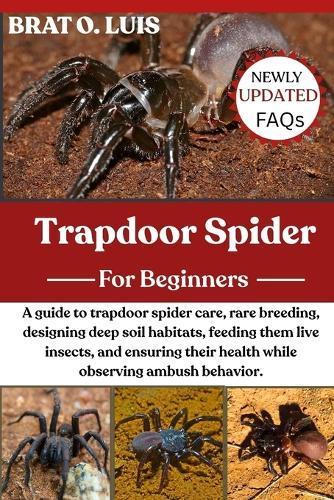Overview
Trapdoor spiders belong to the infraorder Mygalomorphae, one of the most ancient branches of spider evolution. Mygalomorphs are distinguished by their downward-pointing fangs, which strike vertically rather than crossing like those of araneomorph spiders. This group includes tarantulas, funnel-web spiders, and other ground-dwelling hunters, many of which display primitive features that have persisted for millions of years. The family Ctenizidae was once thought to contain a wide variety of trapdoor-building species across the globe. However, as taxonomy has advanced, many genera once included under Ctenizidae have been reassigned to other families such as Idiopidae, Nemesiidae, and Halonoproctidae. These changes reflect the growing reliance on molecular genetics and detailed morphological comparisons to clarify evolutionary relationships. Today, the strict classification of Ctenizidae is narrower, but the term ""trapdoor spider"" continues to be used in a broader sense for burrowing mygalomorphs that employ trapdoors. Distinguishing Features of Ctenizidae Chelicerae and fangs: Large, vertical, and adapted for delivering a strong ambush strike. Stout body: Compact, muscular, and designed for burrowing and sudden bursts of speed. Silk use: Unlike orb-weavers, which use silk to create aerial webs, trapdoor spiders use silk primarily as structural reinforcement for their burrows. Burrow engineering: The defining characteristic-constructing a camouflaged door from soil, vegetation, and silk. Comparisons with Related Families Tarantulas (Theraphosidae): Tarantulas share the burrowing habit but do not create hinged trapdoors. They also tend to be larger and more mobile. Idiopidae (spurred trapdoor spiders): Closely related and also known for burrow doors, but often exhibit distinct spurs on their legs used in mating behaviors. Nemesiidae: Another family of trapdoor-building mygalomorphs, often smaller and with subtle morphological differences in spinnerets and burrow design. The evolutionary lineage of trapdoor spiders demonstrates the incredible adaptability of mygalomorphs. Fossil evidence suggests that ancestors of modern trapdoor spiders were already constructing burrows tens of millions of years ago. The persistence of this behavior indicates its high evolutionary success. Unlike web-spinning species, which rely on aerial prey availability, trapdoor spiders exploit terrestrial ecosystems, hunting ground-dwelling insects and small vertebrates that wander too close to their concealed entrances. Primitive Yet Successful Evolution Trapdoor spiders exemplify the idea of ""evolutionary stasis."" While many other spider families evolved complex webs or migratory hunting behaviors, mygalomorphs, including trapdoor spiders, retained a fundamentally ancient lifestyle-burrowing, ambush hunting, and relying on physical strength rather than speed or intricate web designs. Their survival into the modern era attests to the effectiveness of their strategy.
Full Product Details
Author: Brat O Luis
Publisher: Independently Published
Imprint: Independently Published
Dimensions:
Width: 15.20cm
, Height: 0.90cm
, Length: 22.90cm
Weight: 0.218kg
ISBN: 9798269130903
Pages: 158
Publication Date: 09 October 2025
Audience:
General/trade
,
General
Format: Paperback
Publisher's Status: Active
Availability: Available To Order

We have confirmation that this item is in stock with the supplier. It will be ordered in for you and dispatched immediately.



